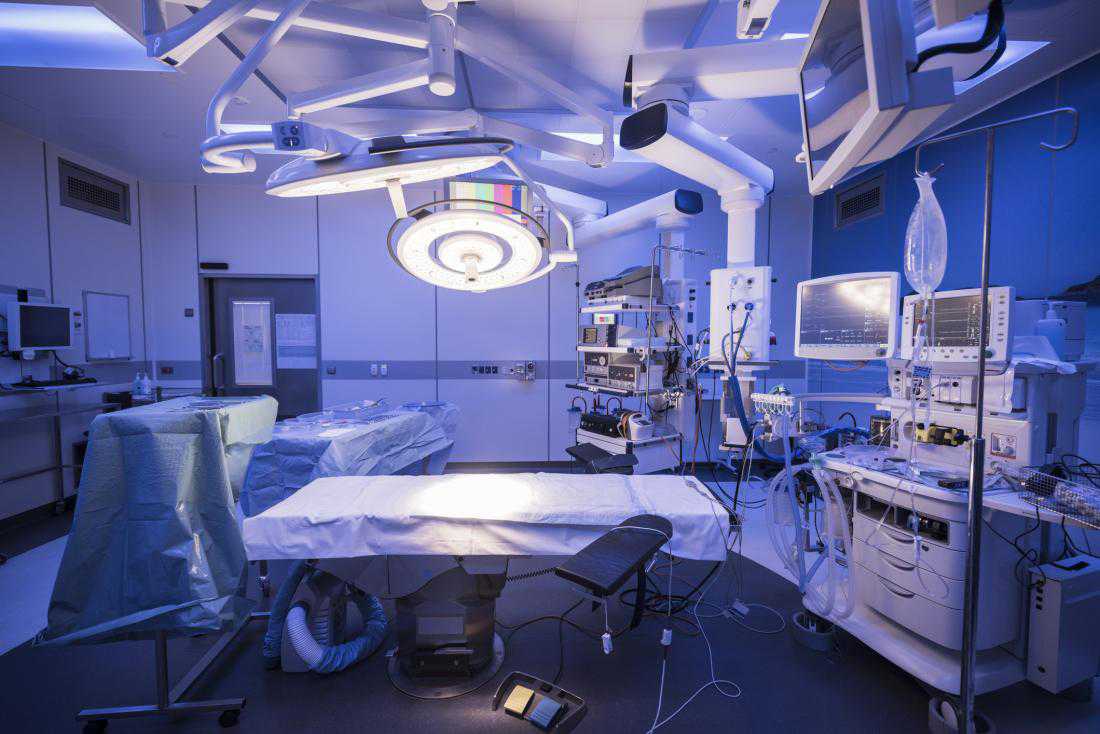UV light could reduce hospital-acquired infections
03 February, 2019

A new study shows that ultraviolet disinfection technology eliminates up to 97.7 percent of pathogens in the operating room. Using this light wavelength might help defeat superbugs.
The study, published in the American Journal of Infection Control, examined the effects of a type of ultraviolet (UV) light technology called PurpleSun.
This technology is designed for use in operating rooms, patient rooms, and other healthcare settings.
The study shows that the device can help reduce the risk of infections acquired in the hospital.
These infections cost billions of dollars, and some estimates state that they cause almost 100,000 deaths each year in the United States.
In the current study, researchers used over 3,000 microbiological samples from 100 different surgical cases at three hospitals in the New York area.
Researchers then looked at how well the PurpleSun technology worked. They found that it eliminated most pathogens.
PurpleSun is unique, as it has foldable partitions, which means that it can surround equipment on all sides, and its light hits five surface points. It also uses high levels of UV intensity in 90-second intervals for optimum effect.
"[UV] light technology will not replace manual cleaning and disinfection with chemicals, but it has a place in healthcare settings," says Donna Armellino, lead author of the study and vice president of infection prevention at Northwell Health. She explains:
"This technology can optimize environmental cleanliness, resulting in decreased pathogens that could potentially cause infection."
-Donna Armellino
Healthcare-associated infections
The last thing anyone wants to experience is getting some sort of infection in a healthcare environment, such as an operating room or hospital, while they're already seeking medical care.
This type of infection, called a healthcare-associated infection (HAI), happens frequently. According to the Office of Disease Prevention and Health Promotion, around 1 in 25 inpatients has an infection that's directly related to hospital care.
Certain factors can raise someone's risk of developing an HAI; these include catheters, having surgery, getting a shot, and being in a healthcare setting that has not been properly disinfected.
Also, there is a risk of catching an infection from a healthcare worker who is sick. Overuse of antibiotics can play a part, as well.
The U.S. Department of Health and Human Services estimate that over 1 million HAIs develop within the country's health system every single year.
HAIs can result in severe complications, and outcomes are often poor. These infections cost billions of dollars each year in healthcare spending and other costs, and HAIs remain a focus for people who work in public health.
UV light in the healthcare setting
Using UV light for disinfection purposes is not a novel idea. In 1877, two Englishmen published a paper in the journal Nature describing how sunlight prohibited the growth of microorganisms.
Studies have looked at UV light in relation to cutting down on airborne pathogens, and work continues to see if this type of technology can be of further use, including the current study, which looks at UV light technology and its use in the operating room.
PurpleSun definitely has its advantages, as it eliminates human error and other common pitfalls of chemical disinfecting agents. It also affects multiple surfaces within seconds and has a configuration that allows it to reach all sides of a piece of equipment. As this study shows, it is very effective at eliminating pathogens.
As Armellino says, while UV disinfection technology should not completely replace manual cleaning, it can be a great accompaniment to regular disinfection routines.
TAG(s):
